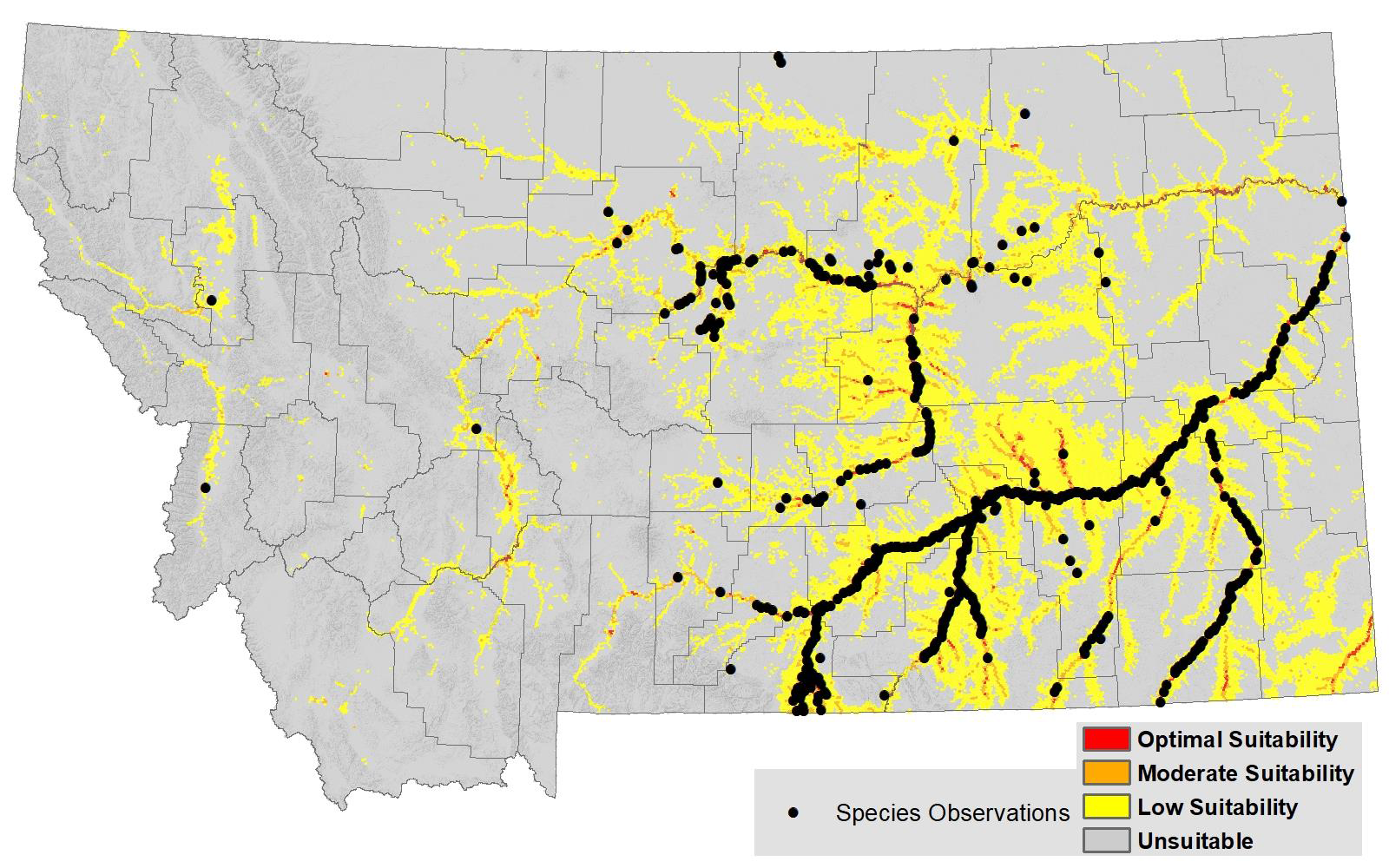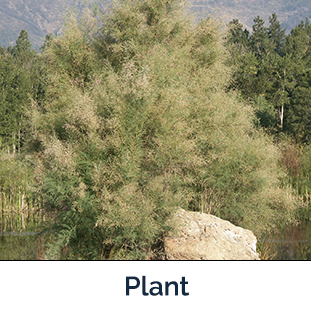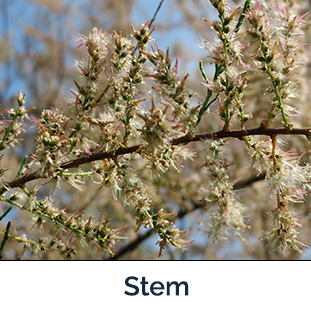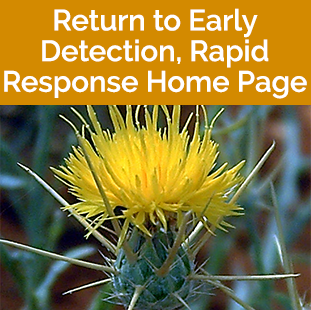Saltcedar
(2B, abundant in Montana and widespread in many counties, require eradication or containment where less abundant)
(Tamarix spp.)
Quick ID- Small pink or occasionally white flowers in narrow drooping clusters
- Slender stems with scale-like leaves that resemble cedar
- Thin reddish-brown bark that becomes furrowed and ridged with age
- Large shrub to small tree

Map Courtesy of Montana Natural Heritage Program, Saltcedar – Low Suitability: 14% of Montana, Moderate: 1%, Optimal: 1%. Larger image.

Saltcedar Tree
Video Information
Weed Images




Weed Specifications
| Type | Information |
|---|---|
| Toxicity | Non-toxic |
| Best Management Practices | Herbicide, promoting cottonwoods and willows to shade saltcedar |
| Habitat | Near water bodies, in cottonwood and willow habitat, does best in full sun |
| Root | Deep taproot and lateral roots that can reach 20’ in length, reproduces from seed and vegetative shoots |
| Leaves | Alternate, scale-like, deciduous, salt-secreting glands on the undersides |
| Lifespan | Long-lived perennial, 20 year life expectancy |
| Similar Looking Plants | Rocky Mountain juniper, western redcedar |
| Important Information | Forms dense thickets with limited usefulness for Montana animals, grow in highly saline soils and the secreted salt in their leaf litter can prevent establishment of other plants, one plant can produce half a million seeds, also known as tamarisk |
Find Out More:
- Montana Weed Control Association - Saltceder
- MontGuide - Saltceder
- Ravalli County - Saltceder
- MSU Extension MontGuide - Saltceder
- MSU Extension Magazine - Saltceder - orderpubs@montana.edu or call 406-994-3273

